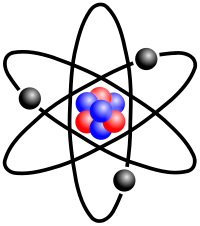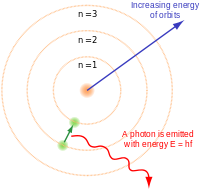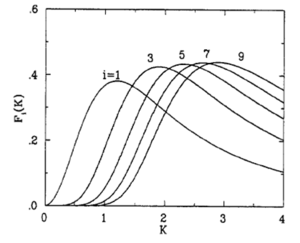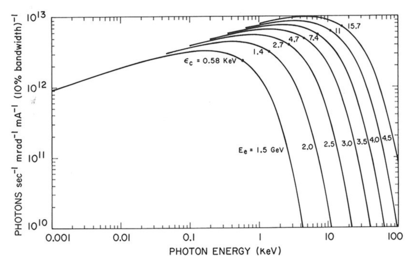The structure of the electron is fundamentally different from that of the proton or the neutron. Let s assume that, even if we don't accept that it is true. Let us say electrons are made up from photons, but there is an intermediate structure between them. It would make logical sense (to me) to assume so.
There are differing ideas about the structure of the atom. The simplest way to make an atomic bomb (fission explosion or uncontrolled nuclear chain reaction), is to use neutrons to split atoms. This is done by using radio waves to boost the (hydrogen or) helium atom (nucleus) to release neutrons. We can go into this in more detail later, but let me say that it is wise to use high explosives and shaped charges to create a critical mass because it is a lot more difficult to do it that way, but science cannot hide the facts away for ever, and it is easy to find a recipe for nitro glycerine or even gunpowder, but only a food would experiment with high explosives with insufficient knowledge. We don't need nuclear weapons because we cannot use them.
If you are interested in nuclear physics, (and who isn't), you really should read, or attempt to read Einstein's original papers, even if you can't follow all the mathematics (algebra or calculus). http://www.bartleby.com/173/
Here is the problem. F=MA, P=MV
To me, gravity is not an "attractive" force (previous page). A force, by definition is something which exerts something on something else, so a force is exerted (like charges repel), and the opposite is not exerting a force, at least for a period of time.
What a mass can exert is electromagnetic radion of various types; gamma, xrays, radio waves, magnetic fields etc. This will travel through space as (a function of) quantum mechanics, and is (inversely) proportional to mass even if a mass does not generate a strong magnetic field because the mass does rotate, travel through space, and have charge at its east and west points as well as its north and south poles even if these change. Electrogmagnetic forces generate field line at 'right angles'. More details later.

The bluish glow from the central region of the nebula is due to synchrotron radiation.
In the photoelectric effect, electrons are emitted from matter (metals and non-metallic solids, liquids or gases) as a consequence of their absorption of energy from electromagnetic radiation of very short wavelength, such as visible or ultraviolet radiation. Electrons emitted in this manner may be referred to as photoelectrons.[1][2] First observed by Heinrich Hertz in 1887,[2][3] the phenomenon is also known as the Hertz effect,[4][5] although the latter term has fallen out of general use. Hertz observed and then showed that electrodes illuminated with ultraviolet light create electric sparks more easily.
The photoelectric effect requires photons with energies from a few electronvolts to over 1 MeV in high atomic number elements. Study of the photoelectric effect led to important steps in understanding the quantum nature of light and electrons and influenced the formation of the concept of wave–particle duality.[1] Other phenomena where light affects the movement of electric charges include the photoconductive effect (also known as photoconductivity or photoresistivity), the photovoltaic effect, and the photoelectrochemical effect.
Synchrotron radiation emission as a function of the beam energy
First, define the critical photon energy as 
Then, the relationship between radiated power and photon energy is shown in the graph on the rightside. The higher the critical energy, the more photons with high energies are generated. Note that, there is no dependence on the energy at longer wavelength.

A class of astronomical sources where synchrotron emission is important is the pulsar wind nebulae, or plerions, of which the Crab nebula and its associated pulsar are archetypal. Pulsed emission gamma-ray radiation from the Crab has recently been observed up to ≥25 GeV,[9] probably due to synchrotron emission by electrons trapped in the strong magnetic field around the pulsar. Polarization in the Crab[10] at energies from 0.1 to 1.0 MeV illustrates a typical synchrotron radiation.

Synchrotron radiation
Synchrotron radiation was named after its discovery in a General Electric synchrotron accelerator built in 1946 and announced in May 1947 by Frank Elder, Anatole Gurewitsch, Robert Langmuir, and Herb Pollock in a letter entitled "Radiation from Electrons in a Synchrotron".[1] Pollock recounts:
- "On April 24, Langmuir and I were running the machine and as usual were trying to push the electron gun and its associated pulse transformer to the limit. Some intermittent sparking had occurred and we asked the technician to observe with a mirror around the protective concrete wall. He immediately signaled to turn off the synchrotron as "he saw an arc in the tube." The vacuum was still excellent, so Langmuir and I came to the end of the wall and observed. At first we thought it might be due to Cherenkov radiation, but it soon became clearer that we were seeing Ivanenko and Pomeranchuk radiation."[2]
Relationship between power radiated and the photon energy

Only odd harmonics are radiated on-axis
When high-energy particles are in rapid motion, including electrons forced to travel in a curved path by a magnetic field, synchrotron radiation is produced. This is similar to a radio antenna, but with the difference that, in theory, the relativistic speed will change the observed frequency due to the Doppler effect by the Lorentz factor, γ. Relativistic time contraction then bumps the frequency observed in the lab by another factor of γ, thus multiplying the GHz frequency of the resonant cavity that accelerates the electrons into the X-ray range. The radiated power is given by the relativistic Larmor formula while the force on the emitting electron is given by the Abraham-Lorentz-Dirac force. The radiation pattern can be distorted from an isotropic dipole pattern into an extremely forward-pointing cone of radiation. Synchrotron radiation is the brightest artificial source of X-rays. The planar acceleration geometry appears to make the radiation linearly polarized when observed in the orbital plane, and circularly polarized when observed at a small angle to that plane. Amplitude and frequency are however focussed to the polar ecliptic.
